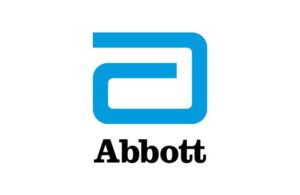 Abbott today announced data supporting its Esprit BTK everolimus-eluting resorbable scaffold system.
Abbott today announced data supporting its Esprit BTK everolimus-eluting resorbable scaffold system.
The company designed Esprit BTK to treat people with chronic limb-threatening ischemia (CLTI), a severe stage of peripheral artery disease (PAD).
Abbott said its LIFE-BTK trial met both of its primary safety and effectiveness endpoints. It demonstrated the reduction of disease progression and improved medical outcomes compared to balloon angioplasty, the current standard of care. Abbott presented its results at the 35th Transcatheter Cardiovascular Therapeutics (TCT) Conference in San Francisco. It simultaneously published results in the New England Journal of Medicine.
Based on the results of the study, Abbott intends to submit Esprit BTK to the FDA for review.
“Millions of people suffer from PAD. Yet, in the United States, there are currently no approved drug-eluting stents, drug-coated balloons or bare-metal stents available for use below the knee,” said Dr. Brian DeRubertis, New York Presbyterian-Weill Cornell Medical Center, and one of the principal investigators in the trial. “This underscores a pressing and substantial need for improved treatment options for people with CLTI and PAD.
“Results from the LIFE-BTK trial highlight the efficacy of Esprit BTK and its potential to deliver significant benefits in terms of opening blocked arteries below the knee and providing sustained treatment over time.”
More about the Abbott Esprit BTK and the study results
Abbott designed Esprit TK as a drug-eluting, resorbable scaffold. It features materials similar to dissolving sutures. Unlike metal stents, it’s not a permanent implant, providing support for blocked vessels only for a few months after the blockage is cleared. At that point, the vessel can remain open on its own.
The company’s LIFE-BTK trial enrolled 261 people globally. It looked to investigate whether Esprit BTK could offer greater benefits than balloon angioplasty. The study had a primary efficacy endpoint of primary patency plus limb salvage. It met that endpoint. Esprit BTK showed superiority to balloon angioplasty in lowering the risk of total obstruction of the target vessel. It also showed superiority in narrowing the target lesion, major amputation and repeat interventions of the target lesion.
Abbott said investigators set the primary safety endpoint as freedom from above-the-ankle amputation, major reintervention at six months and death within 30 days. The study demonstrated non-inferiority to balloon angioplasty on the safety endpoint.
Esprit BTK showed significantly greater freedom from the primary efficacy clinical events (74.5% vs. 43.7%) for people with CLTI. Its secondary endpoints revealed superiority to balloon angioplasty in reducing vessel re-narrowing. The stent had a 25.8% improvement on re-narrowing and a 14.2% improvement on sustained openness of the vessels.
“The LIFE-BTK trial data underscores the profound impact that Esprit BTK could have for millions with PAD,” said Jennifer Jones-McMeans, VP of global clinical affairs at Abbott’s vascular business. “With angioplasty, multiple interventions are all too common. The results from this trial demonstrate a compelling and meaningful development in clinical outcomes, ultimately helping people have less adverse events and reinterventions, enhancing their quality of life.”
